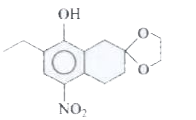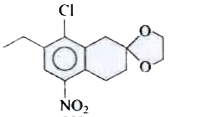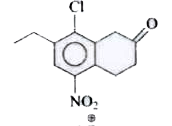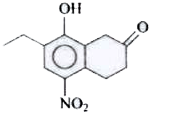Predict the major product formed when HCl is added to isobutylene, Explain the mechanism involved.
Step-by-Step Solution:
1. Identify the Reactants:
The reactant in this case is isobutylene, which has the structure:
CH3C=C(CH3)H2
2. Add HCl to Isobutylene:
When HCl is added to isobutylene, it dissociates into H⁺ and Cl⁻ ions. The reaction can be represented as:
CH3C=C(CH3)H2+HCl→?
3. Apply Markovnikov's Rule:
According to Markovnikov's rule, the hydrogen (H⁺) will attach to the carbon atom that has more hydrogen atoms already attached. In isobutylene, the two carbon atoms involved in the double bond are:
- One carbon (C1) has 2 hydrogen atoms (CH₂).
- The other carbon (C2) has 0 hydrogen atoms (C with a methyl group attached).
Therefore, H⁺ will add to C1, leading to the formation of a carbocation at C2.
4. Formation of Carbocation:
After the addition of H⁺ to C1, a carbocation is formed at C2:
CH3C+(CH3)H2
This carbocation is a tertiary carbocation because it is attached to three carbon atoms.
5. Nucleophilic Attack by Cl⁻:
The Cl⁻ ion will then attack the positively charged carbon (C2) of the carbocation:
CH3C+(CH3)H2+Cl−→CH3C(Cl)(CH3)H2
6. Final Product:
The final product of the reaction is:
2-chloro-2-methylpropane
Summary of the Mechanism:
- The reaction follows Markovnikov's rule, where the H⁺ adds to the carbon with more hydrogen atoms, forming a more stable tertiary carbocation.
- The Cl⁻ then attacks this carbocation to form the major product.
The reactant in this case is isobutylene, which has the structure:
CH3C=C(CH3)H2
When HCl is added to isobutylene, it dissociates into H⁺ and Cl⁻ ions. The reaction can be represented as:
CH3C=C(CH3)H2+HCl→?
According to Markovnikov's rule, the hydrogen (H⁺) will attach to the carbon atom that has more hydrogen atoms already attached. In isobutylene, the two carbon atoms involved in the double bond are:
- One carbon (C1) has 2 hydrogen atoms (CH₂).
- The other carbon (C2) has 0 hydrogen atoms (C with a methyl group attached).
After the addition of H⁺ to C1, a carbocation is formed at C2:
CH3C+(CH3)H2
This carbocation is a tertiary carbocation because it is attached to three carbon atoms.
The Cl⁻ ion will then attack the positively charged carbon (C2) of the carbocation:
CH3C+(CH3)H2+Cl−→CH3C(Cl)(CH3)H2
The final product of the reaction is:
2-chloro-2-methylpropane
- The reaction follows Markovnikov's rule, where the H⁺ adds to the carbon with more hydrogen atoms, forming a more stable tertiary carbocation.
- The Cl⁻ then attacks this carbocation to form the major product.
Topper's Solved these Questions
- HALOALKANES AND HALOARENESBOOK - NCERT EXEMPLAR ENGLISHCHAPTER - HALOALKANES AND HALOARENESEXERCISE - Match Type Questions
6 Videos
- HALOALKANES AND HALOARENESBOOK - NCERT EXEMPLAR ENGLISHCHAPTER - HALOALKANES AND HALOARENESEXERCISE - Assertion & Reason
10 Videos
- HALOALKANES AND HALOARENESBOOK - NCERT EXEMPLAR ENGLISHCHAPTER - HALOALKANES AND HALOARENESEXERCISE - MCQs (More than one option)
12 Videos
- GENERAL PRINCIPLE AND PROCESSES OF ISOLATION OF ELEMENTS BOOK - NCERT EXEMPLAR ENGLISHCHAPTER - GENERAL PRINCIPLE AND PROCESSES OF ISOLATION OF ELEMENTS EXERCISE - Long Answer Type Questions
1 Videos
- P-BLOCK ELEMENTSBOOK - NCERT EXEMPLAR ENGLISHCHAPTER - P-BLOCK ELEMENTSEXERCISE - Long Answer Type Questions
3 Videos
Similar Questions
Knowledge Check

Major product formed is :A B
B C
C D
D
Predict the major product of reaction:
 A
A B
B C
C D
D
Predict the major product of the reaction.
 A
A B
B C
C D
D


_E01_216_Q01.png)




